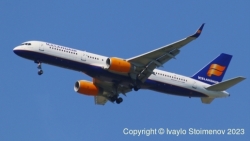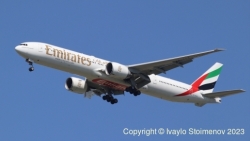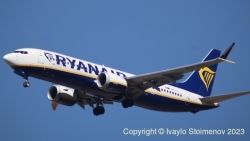History of Boeing
The Boeing Company is a multinational company founded in Seattle, USA and one of the world's largest manufacturers of civil and military aircraft. Originally, the company was started by William Edward Boeing under the name Pacific Aero Products Co on 15th of July 1916 and next year the name was changed to Boeing Airplane Company. The modern day Boeing was formally reincorporated in 1934 in the state of Delaware, USA.
The very first model of Boeing, known as Model 1 (B & W Seaplane), was designed by William Boeing and Conrad Westervelt. However, the commercial success for the company came in 1917 with Boeing models 2 to 5, designed by Wong Tsu. In these early days, Boeing experimented with biplane aircraft, a heritage which will be carried well into the end of the next decade. The notable models 15, 40 and 80 were all biplanes, single-engine aircraft build in 1920s.
In 1930, Boeing build its first monoplanes, the models 200 and 221, in a single unit each. These were all-metal single-engine airplanes designed to deliver mail. In between 1931 and 1933 models 200/221 were transformed into Boeing YB-9 monoplane bomber with two-engines utilized by United States Army Air Corps. The first passenger airline model, Boeing 247 was introduced in 1933.
The Air Mail Act of 1934 prohibited airlines and manufacturers to be parts of the same company. Therefore, Boeing was split into three entities - Boeing Airplane Company, United Airlines, and United Aircraft Corporation. In the next years, Boeing concentrated on the military aircraft and delivered the four-engine B-17 “Flying Fortress” bomber in 1935, the long-range bomber XB-15 in 1937 and the long-range flying boat Boeing 314 “Clipper” in 1938. The passenger airlines were served by the Boeing Model 307 “Stratoliner”, which had its maiden flight on 31st of December 1938.
During the World War II, the company boosted the production of B-17 model. In 1942 the Boeing B-29 “Superfortress”, a four-engine heavy bomber was introduced. The design of a heavy military transport aircraft, Boeing C-97 “Stratofreighter”, finished around the end of 1944 and the aircraft was introduced in United States Air Force in 1947. Notable models of that time were two heavy bombers, Boeing B-47 “Stratojet”, which flew for the first time on 17th December 1947 and the very successful, Boeing B-52 “Stratofortress”, which had a maiden flight on 15th of April 1952.
The 1950s was the decade when Boeing focused on the civil aviation sector with the model of Boeing 707, based on the prototype Boeing 367-80. The same prototype design, 367-80, was used for the production of the military variant, Boeing KC-135 “Stratotanker”. This was an aerial re-fueling tanker, which commenced its first flight on 31st of August 1956. The civil model, Boeing 707, had its maiden flight on 20th of December 1957 and soon propelled the Boeing company into a world leader of commercial jet manufacturing. Few years latter, on 23rd of November 1959, the 707-derivative model known as Boeing 720 flew for the first time.
For Boeing, the 1960s were marked by huge growth in the production of civil airplanes, but also by the acquisition of the Vertol Aircraft Corporation, specialized in designing and manufacturing helicopters. On 9th of February 1963 was the first flight of the narrow-body tri-jet Boeing 727. One of the most popular models of Boeing, the 737 “Original” had its maiden flight on 9th of April 1967. Just by the end of the decade, the long-range wide-body Boeing 747 flew for the first time on 9th of February 1969.

The 1970s were hard for the company, partially caused by the declined orders, cuts in the budget, delays in production and appearance of competition. Nevertheless, the production of the Boeing models of that period continued. In the beginning of the next decade a new model of narrow-body twinejet Boeing 757 was developed and flew for the first time on 19th of February 1982. Nearly at the same time the wide-body long-ranger Boeing 767 was introduced in United Airlines fleet. The popular 737 had a refresh into the Boeing 737 “Classic” line, with a maiden flight on 24th of February 1984.

During the 1990s, the development and production of new better aircraft at Boeing continued. The 12th of June 1994 was the date of the first flight for Boeing 777, a wide-body long range model. Few years latter, on 9th of February 1997, the most popular model of Boeing, the 737 “Next Generation” flew for the first time. Later that year, on 4th of August 1997, Boeing merged with McDonnell Douglas. One of the models of McDonnell Douglas, MD-95, was renamed into what will be known as Boeing 717, which had its maiden flight on 2nd of September 1998.
In the 2000s decade, Boeing expanded in other markets, such as the aerospace satellite communications and military aircraft, but lost its world leader position in manufacturing airplanes for civil aviation to Airbus. At the end of the period, on 15th of December 2009 the new model, Boeing 787 “Dreamliner”, had its maiden flight. Nearly at the same time Boeing 747-8 was also on its way of commercialization.

The 2010s were marked by the introduction of another successful design, the Boeing 737 MAX, which flew for the first time on 29th of January 2016. There were plans to acquire technologies for an autonomous, electric-powered and long-range aircraft in 2017, pending regulatory approval. Boeing continued to develop and manufacture military aircraft and expanded in the space sector. In 2018, the company presented a concept for hypersonic passenger aircraft, projected to travel at Mach 6 (6,500 km/h; 3,500 kn), at a cruising height of 30 km. The newest model of Boeing aiming for the civil aviation market, rolled toward commercial introduction. This was Boeing 777X, which had its maiden flight on 25th of January 2020.
In May 2022, the headquarters of Boeing moved from Chicago to Arlington, Virginia. The company plans to open research and technology center nearby.
Radiolocation of active aircraft
The active Boeing aircraft are spotted through an advanced radiolocation. Successful airframe locks and identification are plotted for each month in a table format.
2024: January • February • March
Boeing models
The following presents a list of Boeing models, the numbers build and some basic information of the aircraft: